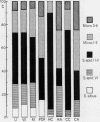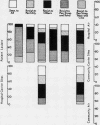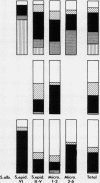Abstract
Five hundred and seventy strains of Gram-positive, catalase-positive, coagulasenegative cocci from various sources were classified on the basis of their ability to grow anaerobically and to ferment mannitol. Five groups were distinguished. The frequency of strains classified in the five groups varied with the source.
Only 26% of the strains were sensitive to all the nine antibiotics used in the tests. About half the strains from the lesions of hospital patients were resistant to penicillin, streptomycin, and tetracycline, and about 10% of them were resistant to cloxacillin.
In general the frequency of antibiotic resistance and the `width' of the resistance spectrum were greater in strains from hospital sources than in those from outside hospital, and they were also greater among strains regarded as falling in the genus Staphylococcus than in those classed as Micrococcus.
Full text
PDF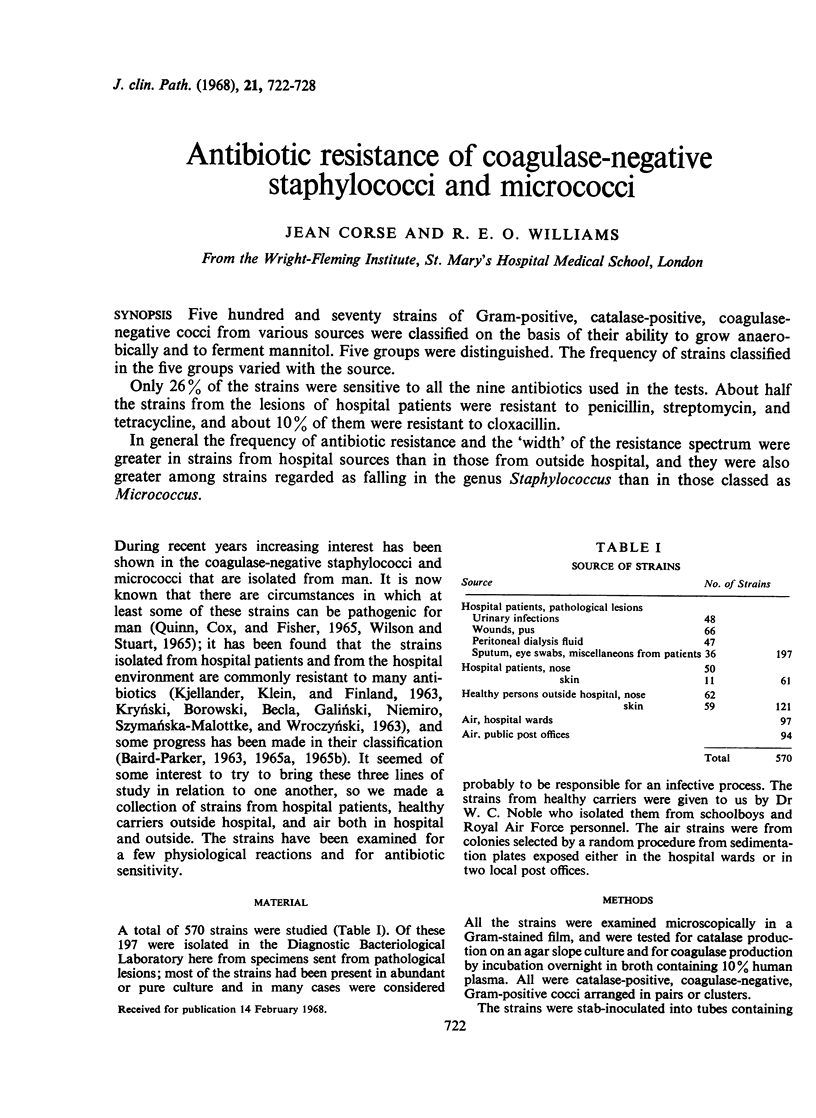
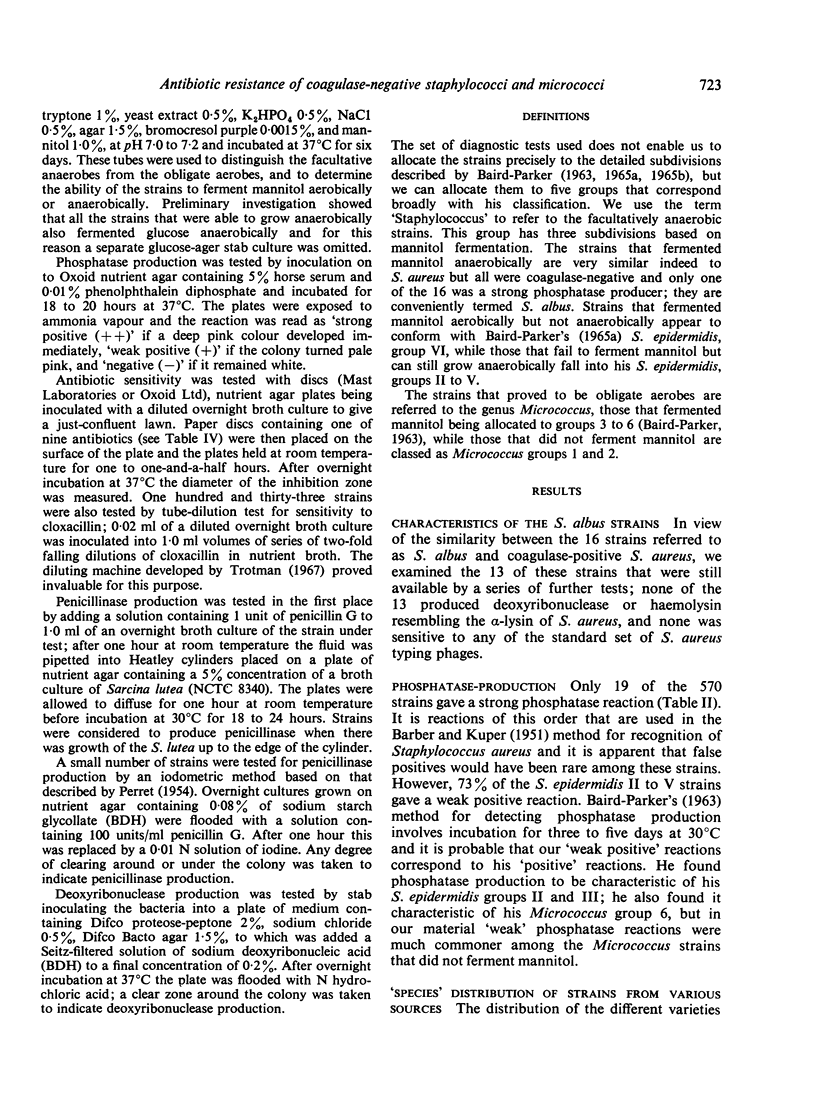
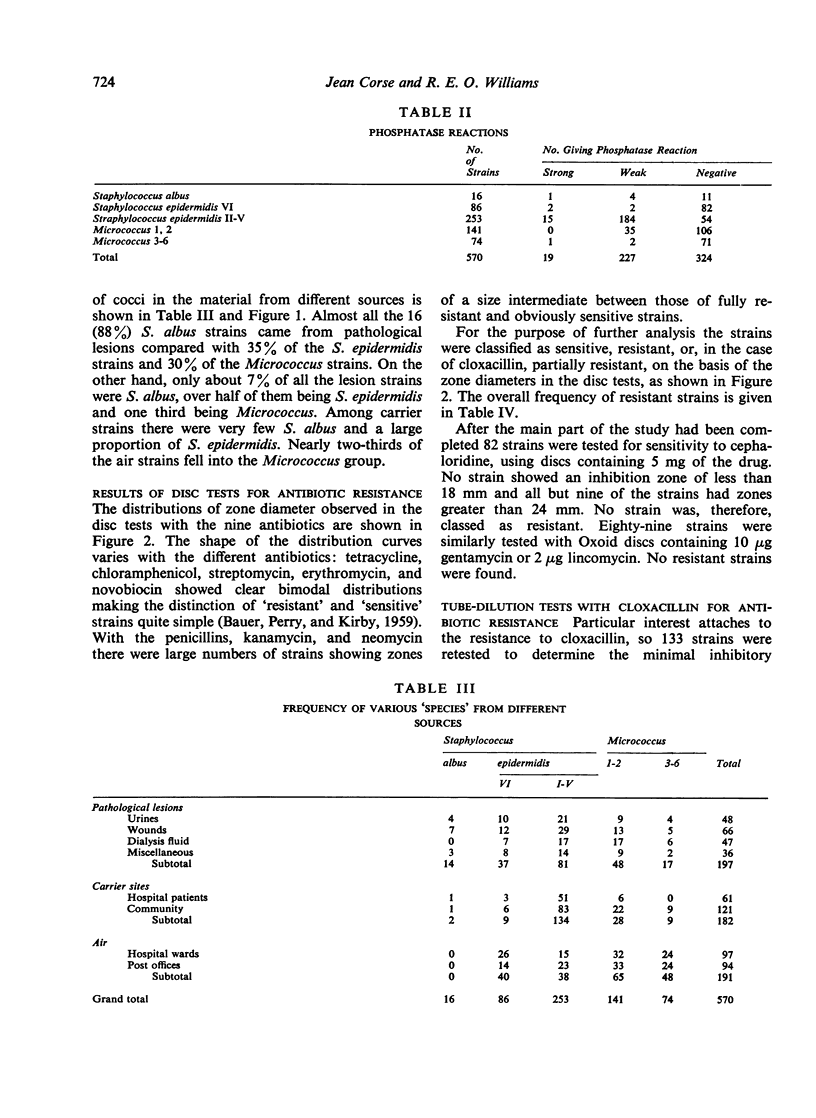
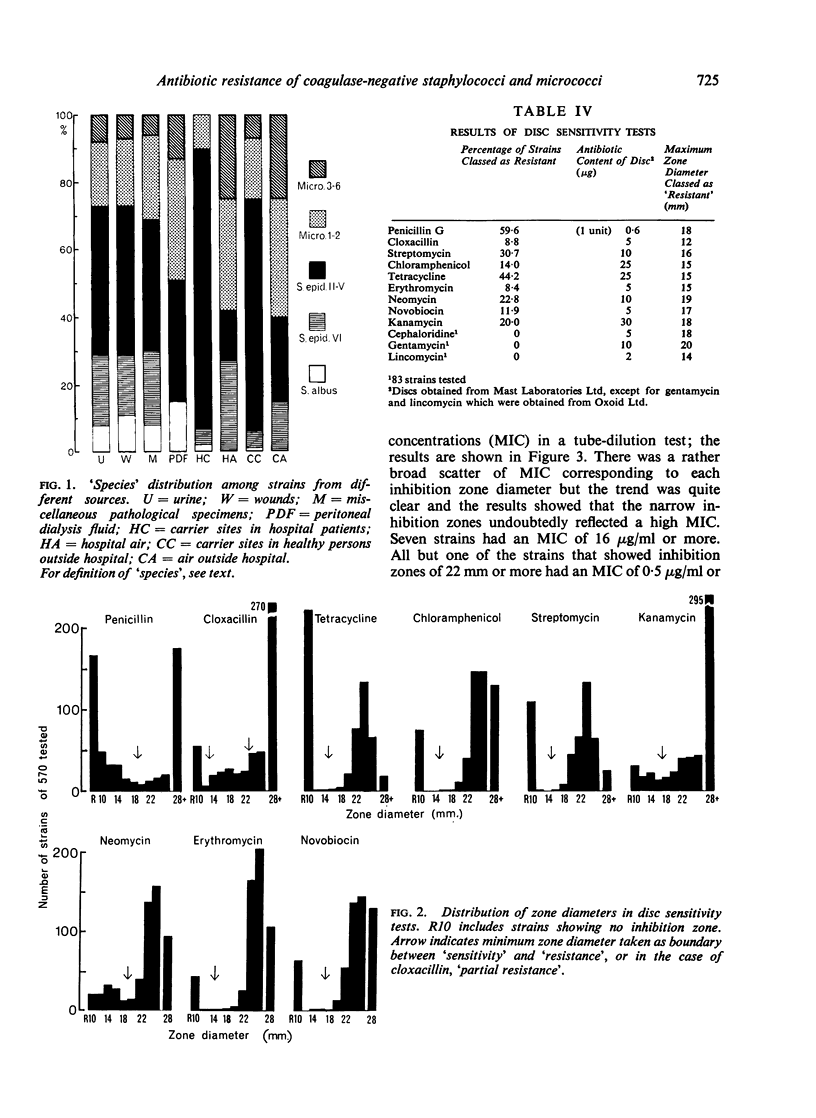
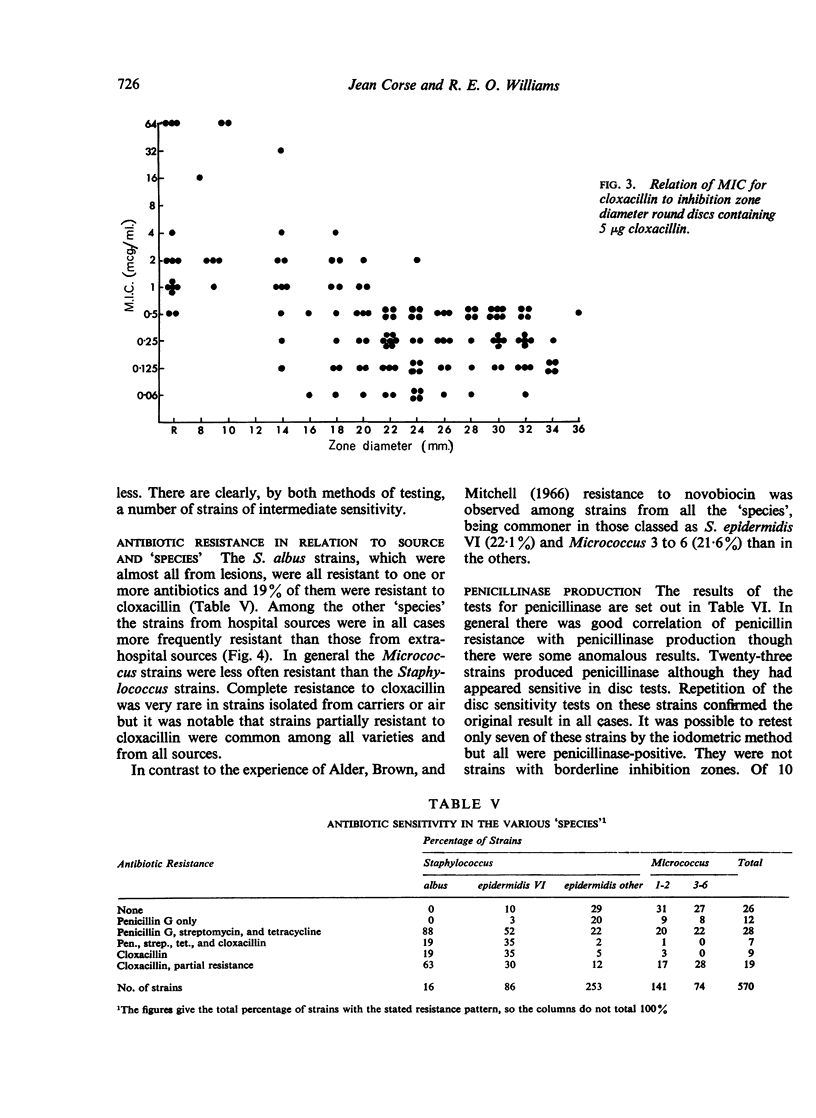
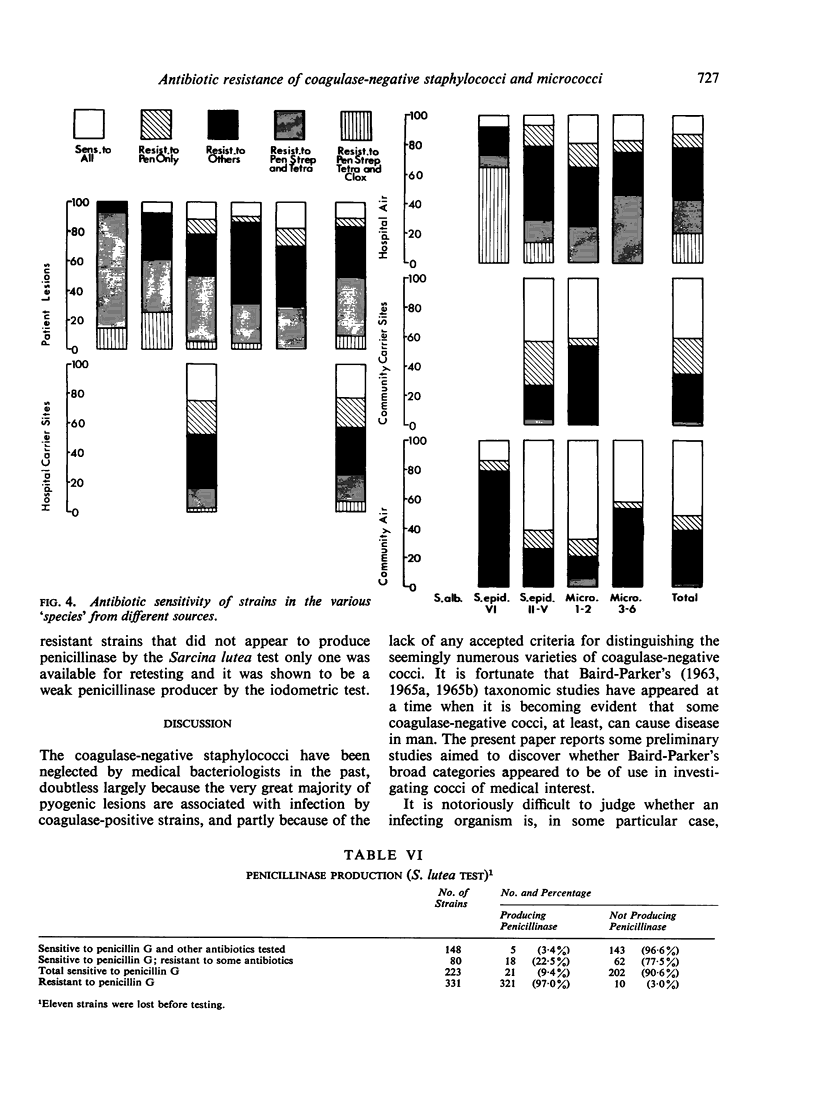
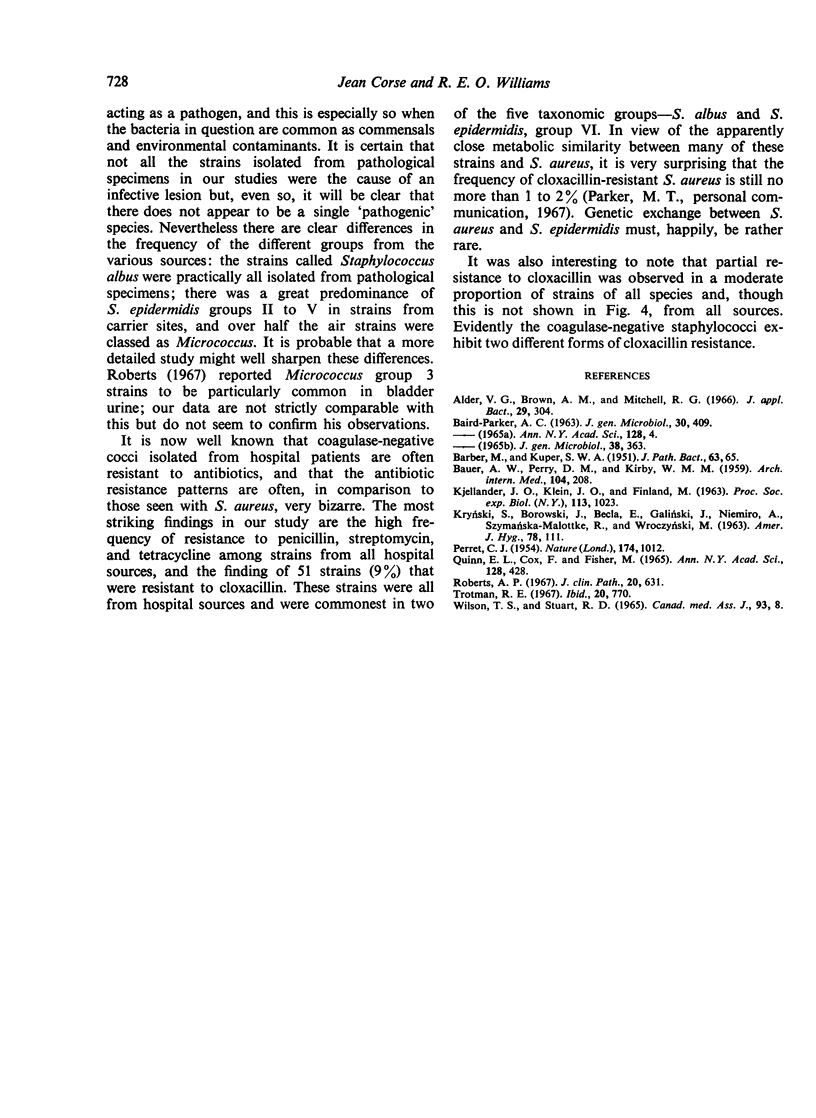
Images in this article
Selected References
These references are in PubMed. This may not be the complete list of references from this article.
- Alder V. G., Brown A. M., Mitchell R. G. The tellurite reactions of coagulase negative staphylococci and micrococci. J Appl Bacteriol. 1966 Aug;29(2):304–307. doi: 10.1111/j.1365-2672.1966.tb03480.x. [DOI] [PubMed] [Google Scholar]
- BAIRD-PARKER A. C. A classification of micrococci and staphylococci based on physiological and biochemical tests. J Gen Microbiol. 1963 Mar;30:409–427. doi: 10.1099/00221287-30-3-409. [DOI] [PubMed] [Google Scholar]
- BARBER M., KUPER S. W. A. Identification of Staphylococcus pyogenes by the phosphatase reaction. J Pathol Bacteriol. 1951 Jan;63(1):65–68. doi: 10.1002/path.1700630108. [DOI] [PubMed] [Google Scholar]
- BAUER A. W., PERRY D. M., KIRBY W. M. Single-disk antibiotic-sensitivity testing of staphylococci; an analysis of technique and results. AMA Arch Intern Med. 1959 Aug;104(2):208–216. doi: 10.1001/archinte.1959.00270080034004. [DOI] [PubMed] [Google Scholar]
- KJELLANDER J. O., KLEIN J. O., FINLAND M. IN VITRO ACTIVITY OF PENICILLINS AGAINST STAPHYLOCOCCUS ALBUS. Proc Soc Exp Biol Med. 1963 Aug-Sep;113:1023–1031. doi: 10.3181/00379727-113-28563. [DOI] [PubMed] [Google Scholar]
- KRYNSKI S., BOROWSKI J., BECLA E., GALINSKI J., NIEMIRO A., SZYMANSKA MALOTTKE R., WROCZYNSKI M. ON THE CORRELATION BETWEEN THE NATURE AND ANTIBIOTIC SENSITIVITY OF THE BACTERIAL FLORA OF THE AIR AND CONTAMINATION OF HOSPITAL ROOMS. Am J Hyg. 1963 Jul;78:111–122. doi: 10.1093/oxfordjournals.aje.a120325. [DOI] [PubMed] [Google Scholar]
- PERRET C. J. Iodometric assay of penicillinase. Nature. 1954 Nov 27;174(4439):1012–1013. doi: 10.1038/1741012a0. [DOI] [PubMed] [Google Scholar]
- Quinn E. L., Cox F., Fisher M. The problem of associating coagulase-negative staphylococci with disease. Ann N Y Acad Sci. 1965 Jul 23;128(1):428–442. doi: 10.1111/j.1749-6632.1965.tb11652.x. [DOI] [PubMed] [Google Scholar]
- Roberts A. P. Micrococcaceae from the uinary tract in pregnancy. J Clin Pathol. 1967 Jul;20(4):631–632. doi: 10.1136/jcp.20.4.631. [DOI] [PMC free article] [PubMed] [Google Scholar]
- Trotman R. E. Automatic serial diluting: an instrument for use in bacteriological laboratories. J Clin Pathol. 1967 Sep;20(5):770–776. doi: 10.1136/jcp.20.5.770. [DOI] [PMC free article] [PubMed] [Google Scholar]
- WILSON T. S., STUART R. D. STAPHYLOCOCCUS ALBUS IN WOUND INFECTION AND IN SEPTICEMIA. Can Med Assoc J. 1965 Jul 3;93:8–16. [PMC free article] [PubMed] [Google Scholar]



